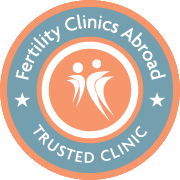When is testicular sperm extraction needed in assisted reproduction?
by Lefteris Gavriil, last updated 02 Jun 2023,
7 min read
During the last few decades, rapid advancements in assisted reproduction techniques (ART) have led us to be able to help thousands of infertile couples to overcome severe infertility conditions and become parents. One of the most extreme male infertility conditions is known as azoospermia. This is a condition described by the total absence of spermatozoa in the ejaculate. Depending on the nature of the problem, it can be classified in two main categories, the obstructive (OA) and the non-obstructive azoospermia (NOA). Independently of the nature of the problem, the clinical image of the infertile man is the same. Up until the 90s the only “treatment” for azoospermia was the use of donor sperm. Then, the first minimally invasive techniques started to emerge aiming to aspirate spermatozoa either from the epididymis (Microsurgical Epididymal Sperm Aspiration, MESA; and Percutaneous Epididymal Sperm Aspiration, PESA) or the testis (Testicular Sperm Aspiration, TESA). Historically, the first cases to be successfully treated were OA-related. However, the aspiration techniques were proven to have limited application when dealing with extreme cases of azoospermia and, consequently, the use of more invasive techniques such as the testicular sperm extraction were unavoidable.
What is testicular biopsy in ART, and which are its goals?
Testicular biopsy is the cornerstone of ART when dealing with extreme cases of azoospermia. The biopsy can be performed either as an open conventional Testicular Sperm Extraction (TESE), or microsurgically under the guidance of an operating microscope (micro-TESE). In both techniques, the extracted tissue is immediately transferred to the laboratory in order to be microscopically examined for the presence of spermatozoa. The confirmation of their presence signals the end of the biopsy and the beginning of the sperm preparation to undergo intracytoplasmic sperm injection (ICSI) and/or cryopreservation.
Micro-TESE seems to be more advantageous than TESE as there is less tissue loss, lower chances of injury complications, and the specimen obtained has less amount of blood allowing for better microscopical observation, detection and selection of the spermatozoa.
According to previous findings, in the era of ICSI and with the use of testicular spermatozoa the fertilisation rate achieved is between 45-75%, the clinical pregnancy rate ranges between 26-57%, and the live birth rate between 18-54%.
When should a testicular biopsy be applied?
A testicular biopsy can be performed in cases of congenital or acquired cases of OA with excellent success rates. It can also be used in all cases of NOA, with the exception of hypogonadotropic hypogonadism. This condition is treated with hormonal therapy, with the successful sperm extraction rates to be ~50-60%. In some NOA cases, multiple biopsies might be needed for successful sperm retrieval, as some parts of the tissue may not be fully representative of the whole tissue. Also, different types of NOA present different expected success rates. For example, men with Klinefelter syndrome have good chances of successful sperm extraction, whereas men with Sertoli cell-only syndrome have significantly fewer chances. In men suffering from the same condition, a variation in the retrieval rates should also be expected. Factors such as age and impaired histological profile may negatively affect the success rates. In addition, the usage of extra clinical laboratory values (e.g. testicle volume, hormone levels in serum) for the pre-biopsy estimation of success rates have been suggested, but their prognostic value at the moment appears to be minimal. Finally, another category of infertile men who may be benefited from testicular biopsy are those with chemotherapy-related NOA, with the success rates to vary depending on the type of cancer (e.g. high rates in men with testicular cancer whereas men in which their medical history includes sarcoma have significantly fewer chances).
Furthermore, for the optimum management of some OA infertility cases due to previous vasectomy, microsurgical correction either via vasovasostomy or vasoepididymostomy should be taken into consideration before performing a surgical sperm retrieval. Microsurgical reconstruction should be the choice of treatment in couples who are willing to conceive naturally more than one pregnancy without further intervention or treatment. In addition, although both cost-effectiveness and pregnancy results favour the usage of the microsurgical correction, there are some cases where testicular biopsy is the only alternative to overcome infertility. For instance, previous studies have shown that successful recovery of fertility after vasovasostomy or vasoepididymostomy can only be successful when the duration between the vasectomy and the surgical correction does not exceed 15 years. In addition, the recovery of fertility is not instant. It is estimated that pre-vasectomy fertility needs approximately 1 year to return, with the duration of this recovery period to vary depending on several parameters including age, the period of time between the vasectomy and the surgical reconstruction and of course the surgical capabilities of the operating doctor. Importantly, this one-year period of time would not be a problem if the age of the female partner does not exceed 35 and has no coexisting infertility problems (e.g. tubal factors, premature ovarian failure). However, it is now widely known that both oocyte quality and quantity significantly decrease year after year after the age of 35, and it is quite restricted after the age of 40. Consequently, the choice of treatment in vasectomy-related cases of male infertility should be made considering all fertility factors of both partners. Generally, all men who are candidates to undergo surgical sperm retrieval should receive thorough genetic counselling prior to the operation.
Finally, in men dealing with ejaculation problems (e.g. extreme stress, nerve damage, spine injury) aspiration techniques (MESA, TESA, PESA) should be preferred to avoid unnecessary surgical operations.
When is the best timing?
If the reason for the surgical sperm retrieval is the cryopreservation of the sperm to protect its quality integrity (e.g. due to the adverse effects of chemotherapy, bone marrow therapy, or certain medication) then the answer is as soon as possible. However, in cases when the extracted spermatozoa are to be used in a treatment cycle through the use of ICSI then there are several different alternatives, mainly depending on the diagnostic results and the policy of each clinic. For financial and safety reasons, many clinics perform the testicular biopsy well in advance to secure the presence of spermatozoa before starting the ovarian stimulation of the female partner, since in some circumstances the chance of successful sperm retrieval might not exceed 60%. Alternatively, some other clinics prefer to perform both sperm extraction and oocyte collection on the same day in order to use “fresh” spermatozoa. Numerous clinical reports have shown that the use of cryopreserved testicular sperm in ICSI does not present lower fertilisation or pregnancy rates compared to freshly harvested spermatozoa, and therefore, it does not compromise success. In all cases, though, the final decision regarding the timing of the testicular biopsy should be made by both the urologist and the gynaecologist after a thorough discussion with the couple regarding the advantages and the disadvantages of each alternative.
Are there any risks and complications?
As in all surgical operations, the success rates as well as risks or complications highly depend on the surgical skills of the operating physician. In general, complications are very rare in testicular biopsies and usually involve temporary pain, swelling, infection or hematoma. When multiple biopsies are performed on the same testicle, adequate resting time should be provided for healing of the wounded tissue. Special attention and care should be given when dealing with men with small and atrophic testicles, due to the increased chances of late-onset hypogonadism. However, in the vast majority of all cases, the hormonal levels return to the pre-biopsy level within a year.
In summary
Testicular biopsy is an important asset to overcome extreme infertility cases due to azoospermia (such as Sertoli cell-only syndrome, post-chemotherapy azoospermia etc.) and has given the opportunity to thousands of couples worldwide to become parents. Numerous studies have investigated and confirmed that the quality of surgically retrieved spermatozoa is suitable for fertilisation and the establishment of a normal pregnancy. We should not forget, however, that testicular biopsy is an operating procedure and, consequently, its usage should only be applied when there is no other alternative. Thorough and personalised information of the couples should be provided by the experts, including potential advantages and disadvantages of each treatment management, as well as the expected success rates. Last but not least, surgical sperm retrieval should always be followed by a reliable cryopreservation protocol (when the number of spermatozoa is adequate) in order to eliminate unnecessary surgical operations in the future.
Newlife IVF Greece deals with many male infertility cases and has a highly specialised urology team that performs testicular biopsies (TESE and micro-TESE) when this is necessary. Do contact us to book your free medical appointment, so we can discuss your case and how we can assist you to become parents.

Lefteris Gavriil, BSc, MSc
Lefteris is a Clinical Embryologist at the Newlife IVF Greece clinic.










